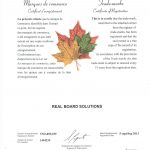A key part of any strategic-planning process is understanding the underlying trends. But how often have you read a prediction, statement or trend, and began to wonder if it were true? Sadly, with so many instant experts, pundits and self-serving gurus, it is sometimes difficult to tell fact from fiction.
Yet without examining trends, your planning process will have a rocky foundation. Here are six tests that can help you reduce your trends and strategic-planning risk.
A trend is defined to be a projection from a known state in the past, through a current known state in the present, to a likely state in the future.
Test 1: Is there data to support the past and the present? Is the data reliable, or is it either uncorroborated or based on junk science? If a line of best fit is based on these types of faulty data, then it won’t be a line of best fit, and the future state might be elsewhere
Test 2: Are the factors in the past that led to the present the same as the factors in the present that might lead to the future? If there have been any paradigm shifts or market disruptions, then the prediction will be off. Think of the disruption in the music industry: Record players to CD players to iPods to streaming music.
Examine the experience of the person making the predictions. Journalists are smart, but they are not practitioners. Academics are smart, but they don’t usually live in industry. Consultants are smart, but they may have a narrow knowledge base.
Test 3: Where does the knowledge that underlies the statement come from? Their background should include research, real-world experience and broad industry knowledge.
Examine the motivations of the person making the predictions. A fashion company, for example, might be motivated to share “trends” that are suspiciously in sync with what they are producing for the next season.
Test 4: What does the predictor stand to gain if the trend prediction turns out to be true? Are they biased? Counterpoint: Just because there may be bias, doesn’t necessarily mean their prediction is wrong; they may be precisely in the best position to make the statement.
For better or worse, the benefit of Google and social media is that a person’s (and organization’s) entire history is available for review. There is no way to hide history.
Test # 5: Notwithstanding the previous four tests, how good is their track record? If they have accurately called the trends many times in the past, their current predictions may also be right.
Some trends really don’t matter — or at least don’t matter to you.
Test # 6: This is the “so what” test, and arguably the most important. Given a particular statement, analyze the implications for your organization — both if the prediction were true and if it were incorrect. How would you change your plans and your actions? If you needn’t make a change either way, then the trend is irrelevant



